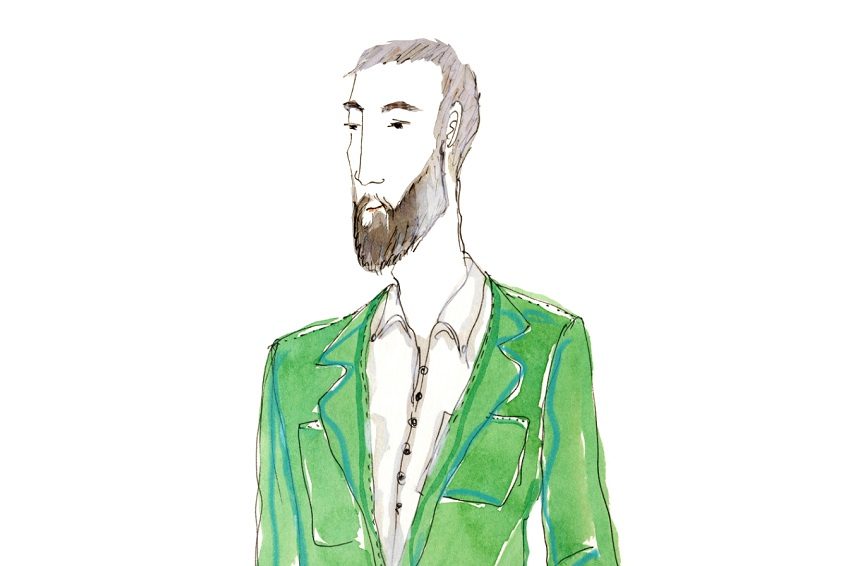Drawn to the City: The Anthropologist

Each month, illustrator Leo Greenfield sketches and profiles an Adelaide character who makes this city tick. This month: Professor John Carty, the anthropologist.
Head of Anthropology at the South Australian Museum wasn’t what Professor John Carty imagined for his career when studying philosophy and poetry at the University of Melbourne. But it’s clear from the books that line his office walls that literature and language are at the core of his practice, and at the heart of what he believes the Museum should give people: access to stories.
On completing his undergraduate studies, Professor Carty was shocked to realise he had barely touched on Australian history. When working on his PhD he set to get to know Australian culture through writing about art practices, and specifically to learn directly from Indigenous Australians.
Professor Carty lived in the desert community of Balgo Western Australia for three years while researching his PhD. Through his research, art became a cross cultural window into Indigenous history and practices. He learnt to speak Kukatja and gained knowledge of the Martu and Ngaanyatjarra languages. Telling stories and learning languages takes collaboration, therefore Professor Carty promotes a collaborative curatorial model that engages and acknowledges the community and particularly the Indigenous community.
Since the 1980s, the Museum has been responsible for mounting progressive exhibitions, such as Dreaming – The Art of Aboriginal Australia, curated by Peter Sutton. For Professor Carty, the Museum has a culturally pioneering spirit and he and his colleagues want to continue this tradition.

The recent appointment of Aboriginal curator Glenn Iseger-Pilkington to the Museum, the involvement of traditional Kaurna custodians in exhibitions and the introduction of Indigenous language courses for the Museum staff are just some examples of more recent changes. “It’s not that these things are radical, it is really just about the Museum being up to date,” Carty says.
Professor Carty says the Museum is “a space in public life that is evolving” and this is evident in the upcoming exhibition, Yidaki. Collaboration with the Yolngu custodians and renowned Master, Djalu Gurruwiwi, has made the project possible, as telling the story of these objects with Indigenous peoples is vital to preserving what is most precious about this vast heritage.
The Museum is a flexible medium for Professor Carty, not just a static archive. And it is through anthropology and the activation of language that the human side of the collection is illuminated. The sharing of stories allows us to deal with our past as well as enjoy this inheritance. South Australia has the largest collection of Aboriginal cultural objects in the country, a rich accumulation of human history that would rival any in the world. “It’s not about inventing why this place is amazing, it’s about exposing what is really here.”
The Museum, says Professor Carty, “has the objects but we don’t always have the story”. Yidaki sets to change this by removing didjeridus from their cabinets of curiosity and activating them as instruments. Professor Carty emphasises these pieces are not “vestiges of a lost people, distant things from an imagined past” but objects from a cultural history that is still alive and practiced and a part of a wider story that “has a place in the public imagination and in the psyche of reconciliation.”